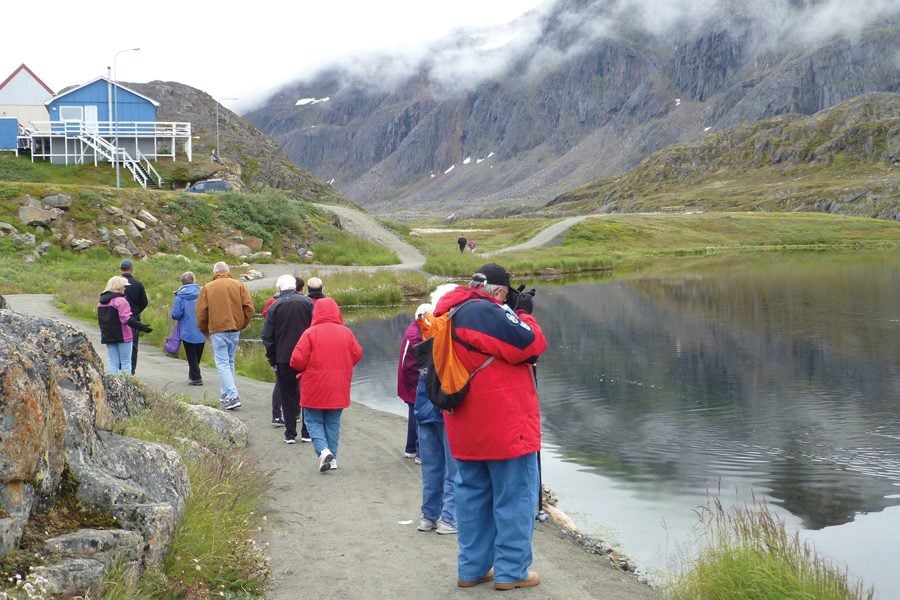Vikings in Greenland experienced summer temperatures up to 50 degrees, researchers find
Source: Steve Haggerty Photography/Colorworld/TNS
Greenland in summer. Recent evidence uncovered by Northwestern researchers suggests that Medieval Greenland was warmer than previously thought.
February 20, 2019
A recent study by Northwestern researchers suggests that Vikings living in southern Greenland experienced a warmer climate than once thought.
Analyzing sediment cores from a lake in the region, doctoral candidate Everett Lasher and Earth and Planetary Science Prof. Yarrow Axford found evidence suggesting that southern Greenland in medieval times likely experienced summers of around 50 degrees Fahrenheit. The research challenges the longstanding idea that the North Atlantic Oscillation — a climatic phenomenon that says a warmer Europe led to a colder Greenland and Iceland — also applies to the time period between 985 and 1450 C.E.
“Previous groups said the NAO was doing something leaving Greenland cold,” Lasher said. “We went in looking for a cold signal but instead found warmth.”
The two-year project began in 2016, when Lasher spent his summer on a remote lake 100 kilometers from the nearest town, Narsaq. The location was optimal for finding evidence to determine the medieval climate, especially in lake deposits, Axford said.
“Whenever you have a lake, there’s stuff accumulating year by year, in layers of mud,” she said.
As lead researcher, Lasher headed a team of two other graduate students and a mountaineer to help navigate. For three weeks, his team collected lake sediment cores in 20-hour days of “perpetual light” pestered by “unending mosquitos.”
“It was basically research and eating macaroni and cheese for three weeks longs,” Lasher said.
From the lakebed, they extracted layers of mud embedded with insects from hundreds of years ago, whose presence indicated warmer temperatures.
Lasher, who studies Arctic paleoclimate change, said he chose Greenland because past studies of the country never focused on such a small period of time. Lasher said he wanted to “look in on a zoomed in time frame” of about 3000 years.
In addition, because Greenland is one of Earth’s two remaining ice sheets, the study’s implications can extend beyond determining the historical climate.
“As that ice melts, it will have profound impacts on millions of people on the planet,” Lasher said.
Back in the lab at Northwestern, Lasher said he and Axford looked for evidence that could point to what the climate was like. They examined the heads of insect larvae called chironomids, focusing on the isotopes of oxygen used to construct the carapaces, Axford said.
“Measuring oxygen isotopes in chironomids is a fairly new way to determine changes in climate,” Lasher said.
Axford and Lasher expected to see the NAO phenomenon show a cooler Greenland. Yet in the particular setting they observed, heavier oxygen isotopes that were present suggested the climate was warmer, likely because of a storm track from the south, Axford said.
Ocean currents, specifically the Gulf Stream, might have been a cause of the warmer temperatures, Lasher said. Although fossilized bugs shed light on southern Greenland’s climate, little can be said about the northern part of the island.
Still, Axford and Lasher’s work reveals that the NAO might not have led to the cold temperatures medieval Greenland was long thought to have had.
“(The study) helps settle the longstanding debate that climate may have had a role on Vikings in the area,” Axford said.
Email: [email protected]
Twitter: @zachbrightt
Related Stories:
— NU professors, students working to create historical climate map of Midwest


